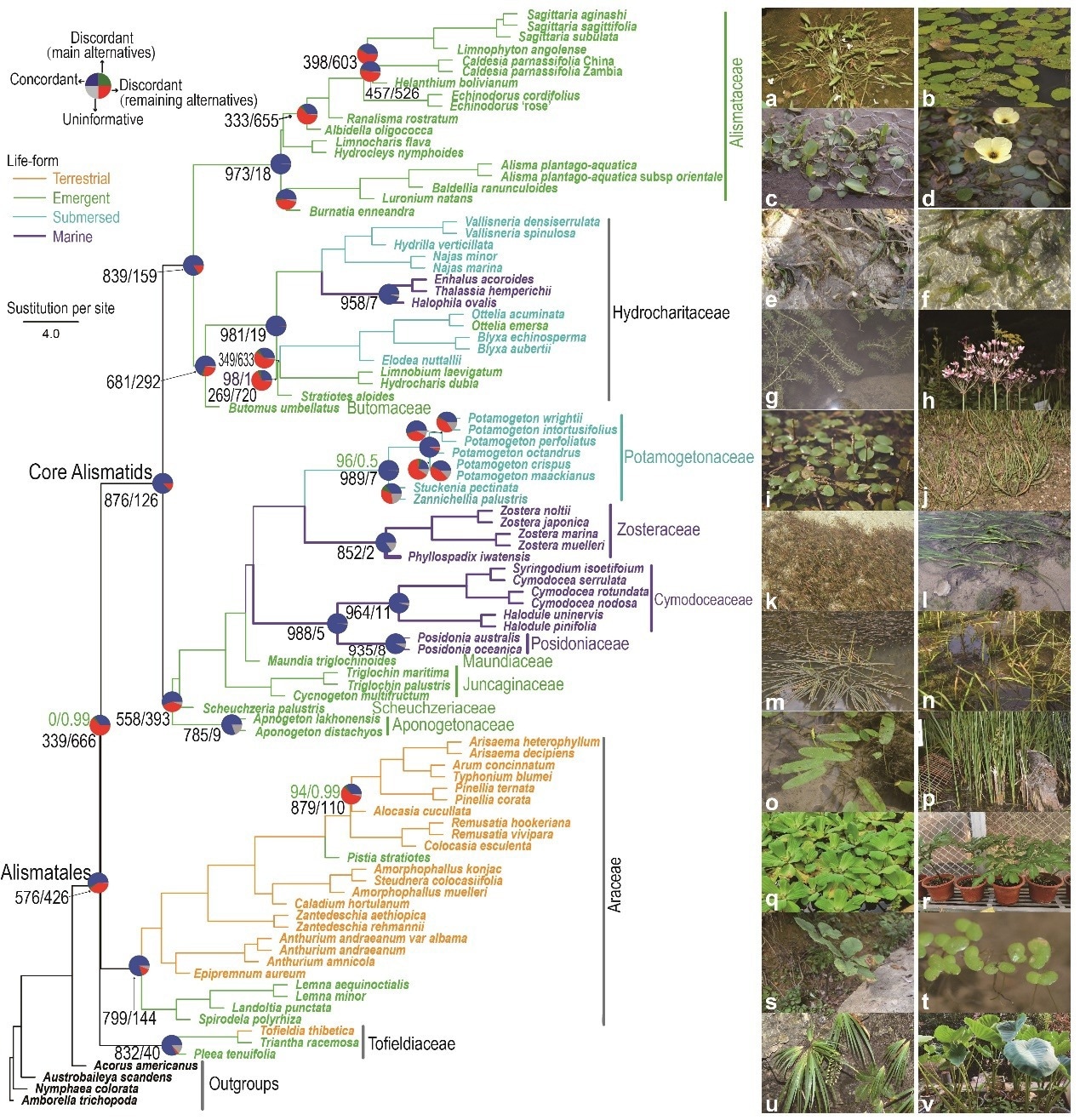It is widely believed that life originated in the ocean. Contrarily, the general public does not recognize that many aquatic organisms are descended from terrestrial organisms. All higher aquatic plants evolved from land plants, whereas whales and dolphins are examples of marine mammals that evolved from land mammals.
 Phylogeny tree of Alismatales. Image Credit: Lingyun Chen.
Phylogeny tree of Alismatales. Image Credit: Lingyun Chen.
The terrestrial, freshwater, and marine environments all differ significantly from one another. What genetic alterations occurred as plants transitioned from terrestrial to aquatic and ultimately marine states?
Researchers from Germany and the United States used Alismatales to examine how plants can adapt to aquatic environments. The team was led by Qingfeng Wang from the Wuhan Botanical Garden of the Chinese Academy of Sciences (CAS). The researchers collected 95 samples from 59 Alismatales species from China, accounting for four genomes and 91 transcriptomes.
The relationship [(Tofieldiaceae, Araceae), core Alismatids] was discovered through species network inference and hypothesis testing. Incomplete lineage sorting and introgression may be to blame for the phylogenetic conflict between the three major clades. Additionally, the analyses identified 18 potential whole-genome duplication events in the Alismatales, one of which occurred in the core Alismatales’ most recent common ancestor.
According to the investigators, lineage and life forms were the major factors impacting the evolutionary patterns for the genes related to freshwater and marine adaptation. Lineage-specific strategies included the loss of light-related genes in Zosteraceae that were retained in other seagrasses.
Additionally, submerged leaves lacked genes associated with stomata. The number of nicotianamine synthase genes increased in submerged plants and seagrasses, which played a crucial part in plants suffering from iron and zinc deficiencies.
The genomic mechanisms that may have contributed to the early monocots’ adaptation to aquatic environments are clarified by this study.
Source:
Journal reference:
Chen, L.-Y., et al. (2022) Phylogenomic Analyses of Alismatales Shed Light into Adaptations to Aquatic Environments. Molecular Biology and Evolution. doi.org/10.1093/molbev/msac079.